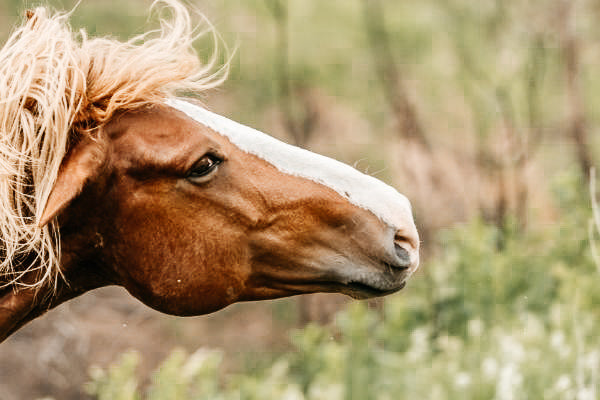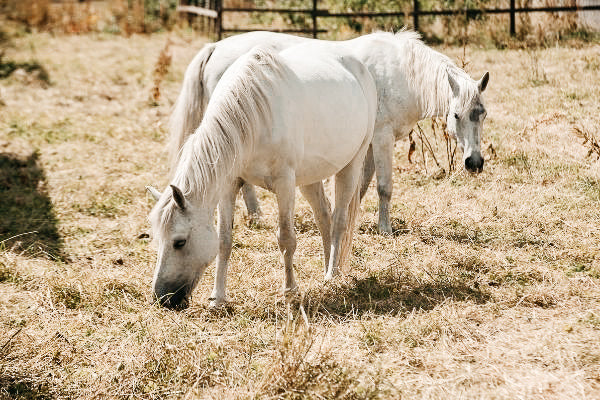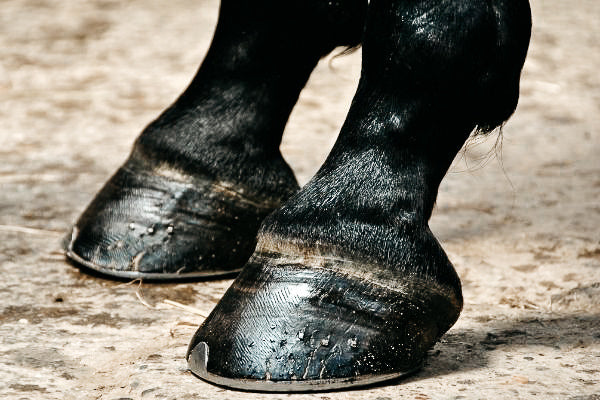
Headshaking – is there hope for the horse?
Headshaking on horses poses a problem for many horse owners. The constant shaking of the head quickly pushes horse training and handling to its limits.
However, it not only restricts the rider, the horse also significantly loses its quality of life. The desperation of many is no coincidence. The search for causes and healing methods is carried out. Sometimes with slow success. Unfortunately.
Interesting to know:
At that time, violently hitting a horse's head was viewed purely as a vice. Today the topic is treated in a differentiated manner. Quasi headshaking as a behavioral disorder in horses, for health reasons, due to various rider mistakes, due to a lack of equipment or as a confrontation with environmental triggers. Therefore, it is not a horse disease in the actual sense and not necessarily just synonymous with cribbing and weaving from the horse.
Of course, we don't want to withhold from you what's behind it and how you can possibly get the headshaking syndrome under control. One thing should be said in advance: Headshaking treatment successes exist - but the path to get there is usually a bit rocky.
Headshaking on horses - what is that?
It is assumed that 1 to 2% of all horses are actually affected. Shaking the head uncontrollably has also been documented in writing for over 200 years.
The horse suddenly moves its head from bottom to top, from side to side or in circular movements for no apparent reason. The resulting jolt goes through the entire horse's body and can of course be clearly felt by the rider. If the animal can still be ridden at all. Even ground work becomes an act if the shaking sensation is enormous.
The symptoms can be less or more pronounced. From banging your head, shaking your head to twitching, everything is there. The immediate, intermittent and compulsive action is the most typical feature of headshaking in horses.
Strength, duration and occurrence can therefore vary. Depending on the cause and even depending on the season and weather conditions.
The animals often show stressed and unfocused behavior. Some horses even reflexively kick with their forehand.
If, for example, there is irritation of the trigeminal nerve, rubbing the nostrils on the legs, wall or floor is often used. There are also animals that literally hide their heads in the tails of their fellow animals. Frequent twitching of facial muscles may be observed.
Increased snorting or slobbering of the upper lip is also a sign of headshaking.
Causes
Health reasons can be:
- Dental problems (e.g. b a tooth root infection or a disturbing wolf tooth)
- health defects in the eyes, ear canal, mouth and nasal cavity (possibly. fluid accumulation)
- Fungal infections
- Injuries to the neck muscles
- Back or spine problems and resulting damage to the nervous system
- Nerve damage caused by viruses (e.g. b herpes) or bacteria (e.g. b Lyme disease)
- a connection between the trigeminal nerve and the optic nerve (e.g. b Trigeminal neuralgia in horses)
- Allergies (pollen, mold or insects)
Some horses shake without any apparent illness-related causes.
Such triggers can be, for example:
- inappropriate bridle and tack
- wrong teeth
- Rideability problems
- Tab error
This narrowing down of the causes resulted in 3 headshaking horse types:
- stereotypical headshaking (similar to a behavioral disorder in horses, e.g. b Cribbing, weaving on horses)
- symptomatic head shaking due to an established cause (became apparent through investigation)
- idiopathic headshaking (with no apparent cause)
Diagnosis
An immediate diagnosis can be difficult and time-consuming because the clinical picture of "head shaker" is so complex. First and foremost, the owner is questioned extensively.
What are the housing and feeding conditions?
When (at rest or at work) do the symptoms appear?
Is it worse when exposed to light?
Where does it happen? On a ride, in the paddock, in the pasture or in the stable?
How long does the head banging last?
Is the animal otherwise healthy? Can it be touched anywhere? Other abnormalities?
Another point is the exclusion process. Here, for example, b administered a painkiller to see if the horse's head banging stops. If so, an attempt is made to localize the pain.
Similar to an allergic reaction. The animal may get Antiallergic drugs and it is being observed again.
X-ray images or a CT scan can also provide information if, for example: b the spine is taken into account.
Therapy of “horse disease”
If there is an allergic reaction, the headshaking syndrome can usually be counteracted well. Dental problems and ostheopathic findings can also be eliminated and headshaking can result in treatment success.
It also makes sense if you suspect unsuitable dentures to replace them with a dentureless alternative.
The effect will be quickly apparent. The saddle is treated in a similar way.
If the horse is only ridden by one rider, a change of riders can reveal whether the riding technique is perhaps the worm.
The story with trigeminal neuralgia in horses is more difficult. This very painful disease requires certain medications (strong side effects) and the prognosis is not really promising. Especially if the animal is in severe pain due to the trigeminal nerve, a decision should always be made in the animal's best interests.
Photophobia is often recognized in these horses (photic headshaking). Headshaking on horses is particularly violent in spring/summer.
The trigeminal nerve is divided into the entire visual field of the horse's head. It is understandable that pain means extreme stress for the animal. A new procedure, the so-called PENS technique, is said to be able to provide some horses with relief for a few months. This electrical nerve stimulation lowers the nerve's stimulation threshold, which results in a reduction in head beating. However, this method is not entirely straightforward.
If a headshaker also wears a nose net, fringes or a dark fly mask, the stimulus can still be distracted.
Ultimately, minimizing the stimulus is always crucial and the main part of treatment.
Acupuncture, homeopathy and chiropractic are often mentioned as accompanying therapies. In any case, good support for the horse's entire organism. A stress-free environment is also recommended for the patient. This means meeting the horse's needs as best as possible - lots of free movement, high-quality food, clean bedding and a relaxed life with other horses. Sounds obvious to you? Great, your horsemanship thinking is intact!
Unfortunately, there is actually a problem with the conditions in which some horses are kept. However, for the benefit of all animals, whether sick or not, what is “necessary” should always be questioned! The love for the unique character of the horse obliges us to do this, right?
Discover more posts

The Connemara Pony – powerful personalities conquer hearts
You have to look twice here - the chic Connemara actually has a great resemblance to the fiery horses of Spain. That's why the nice full-size pony is often called the "Little Andalusian". That...
Continue reading
5 tips for hoof care – user-friendly and effective
Perhaps the saying "No hoof - no horse" tells you! something? That pretty much sums up the topic. Many horse diseases such as: b. Thrush or hoof ulcers can be best prevented through ...
Continue reading
